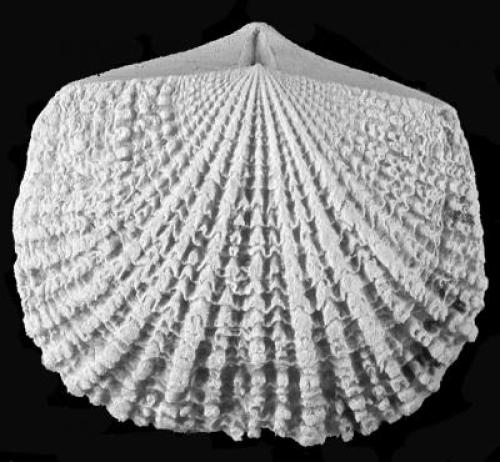New Ohio University research suggests that the rise of an early phase of the Appalachian Mountains and cooling oceans allowed invasive species to upset the North American ecosystem 450 million years ago.
The study, published recently in the journal PLOS ONE, took a closer look at a dramatic ecological shift captured in the fossil record during the Ordovician period. Ohio University scientists argue that major geological developments triggered evolutionary changes in the ancient seas, which were dominated by organisms such as brachiopods, corals, trilobites and crinoids.
During this period, North America was part of an ancient continent called Laurentia that sat near the equator and had a tropical climate. Shifting of Earth’s tectonic plates gave rise to the Taconic Mountains, which were forerunners of the Appalachian Mountains. The geological shift left a depression behind the mountain range, flooding the area with cool water from the surrounding deep ocean.

New Ohio University research suggests that the rise of an early phase of the Appalachian Mountains and cooling oceans allowed invasive species to upset the North American ecosystem 450 million years ago. The study, published in the journal PLOS ONE, took a closer look at a dramatic ecological shift captured in the fossil record during the Ordovician period. Ohio University scientists argue that major geological developments triggered evolutionary changes in the ancient seas, which were dominated by organisms such as brachiopods, corals, trilobites and crinoids. This image shows one of the brachiopods under study, Glyptorthis. (Credit: David Wright)
Scientists knew that there was a massive influx of invasive species into this ocean basin during this time period, but didn’t know where the invaders came from or how they got a foothold in the ecosystem, said Alycia Stigall, an Ohio University associate professor of geological sciences who co-authored the paper with former Ohio University graduate student David Wright, now a doctoral student at Ohio State University.
“The rocks of this time record a major oceanographic shift, pulse of mountain building and a change in evolutionary dynamics coincident with each other,” Stigall said. “We are interested in examining the interactions between these factors.”
Using the fossils of 53 species of brachiopods that dominated the Laurentian ecosystem, Stigall and Wright created several phylogenies, or trees of reconstructed evolutionary relationships, to examine how individual speciation events occurred.
The invaders that proliferated during this time period were species within the groups of animals that inhabited Laurentia, Stigall explained. Within the brachiopods, corals and cephalopods, for example, some species are invasive and some are not.
As the geological changes slowly played out over the course of a million years, two patterns of survival emerged, the scientists report.
During the early stage of mountain building and ocean cooling, the native organisms became geographically divided, slowly evolving into different species suited for these niche habitats. This process, called vicariance, is the typical method by which new species originate on Earth, Stigall said.
As the geological changes progressed, however, species from other regions of the continent began to directly invade habitats, a process called dispersal. Although biodiversity may initially increase, this process decreases biodiversity in the long term, Stigall explained, because it allows a few aggressive species to populate many sites quickly, dominating those ecosystems.
This is the second time that Stigall and her team have found this pattern of speciation in the geological record. A study published in 2010 on the invasive species that prompted a mass extinction during the Devonian period about 375 million years ago also discovered a shift from vicariance to dispersal that contributed to a decline in biodiversity, Stigall noted.
It’s a pattern that’s happening during our modern biodiversity crisis as well, she said.
“Only one out of 10 invaders truly become invasive species. Understanding the process can help determine where to put conservation resources,” she said.



 August 22nd, 2013
August 22nd, 2013  Riffin
Riffin  Posted in
Posted in  Tags:
Tags: 